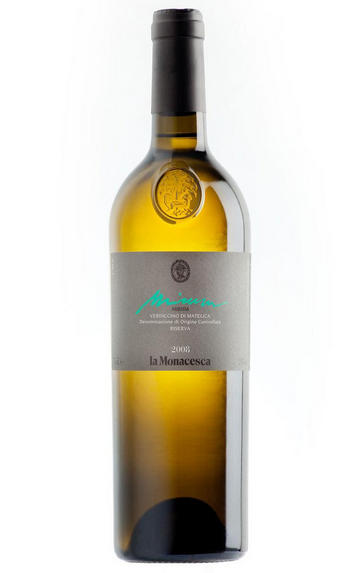
2008 Mirum, Verdicchio di Matelica Riserva, La Monacesca, Marche
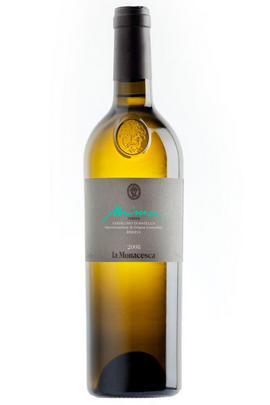
Critics reviews
Richard Hemming - www.jancisrobinson.com – Tutti Frutti Italians- 18 Jan 2012
About this WINE
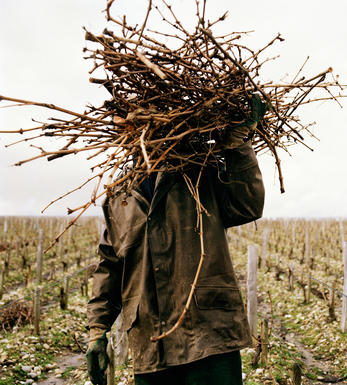
La Monacesca, Marche
Couched high up in the Appenines in the eastern province of Marche lies the La Monacesca (Italian for monastery) La Monacesca estate, on the site of ancient salt-lake of the Paleolithic era rich in minerals. The estate was so-called because of the monastery erected by Benedictine Monks on the run from the dastardly Lombards in 900 A.D. Fast-forward to 1966 when Casimiro Cifola purchased the land and began planting Verdicchio.
For many years the estate has been producing a range of high quality white wines and the Cifolas are now considered by some, among the best white wine producers in the whole of Italy, not just the Marche.
Their estate is located in the largely inaccessible region of Matelica, in the Marche region of central Italy and it is now run by Casimiro's son Aldo Cifola. The 22 hectares of vineyards are located at high altitudes near to the Umbria border and are planted with 80% Verdicchio and 20% Malvasia.
The white wines are distinctive and expressive of the terroir of the district. Over the years, Gambero Rosso has honoured several of their wines with coveted "Three Glass" awards, the most exclusive wine awards in Italy. Until recently the estate has concentrated almost exclusively on white wines, but is now beginning to work with red grapes.
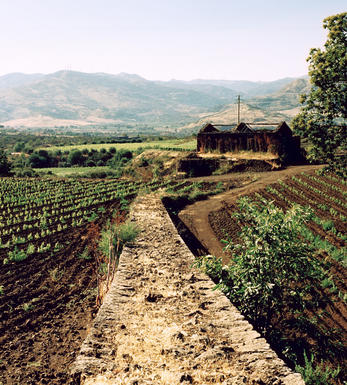
Verdicchio di Matelica
Only a tenth of the size of the Castelli di Jesi DOC, the 300ha of vineyards in Verdicchio di Matelica lie up the hill from their more famous counterpart, on mineral-rich calcareous clay soils at a lofty altitude of 400m.
These factors, combined with a continental climate, help produce one of Italy’s very top white wines. Vinification in stainless-steel is combined with lees contact which delivers a rich, complex wine with a pleasing almost salty twist such is the high level of dry extract.
Recommended producers: La Monacesca.
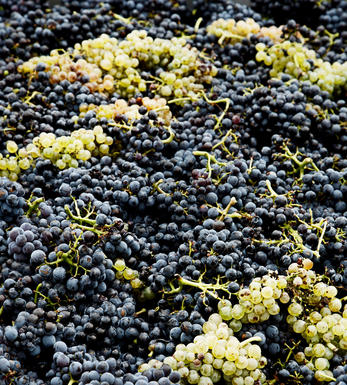
Verdicchio
Verdicchio is one of the most widely planted white grape varieties in the Marche region of central Italy. It has been cultivated for over 600 years and is the grape behind two of the Marche's most important DOCs – Verdicchio dei Castelli di Jesi, to the west of Ancona and 20 miles from the Adriatic Sea, and Verdicchio di Matelica, further inland and at a higher altitude, close to the Umbria border.
Verdicchio's name is derived from verde, meaning green, referring to the yellowish-green skin of the grape, which gives the wine a subtle, greenish hue. It produces crisp, dry, mineral wines of naturally high acidity, often with hints of citrus fruits and almonds. It is also well suited to the production of sparkling wine and Verdicchio was one of the first Italian spumantes back in the 19th century.
Verdicchio has recently been proven to be identical to Trebbiano di Soave, Trebbiano di Lugana (aka Turbiana) and Trebbiano Veltenesi.


Buying options
Add to wishlist
Description
Largely sourced from the property’s oldest vines which were planted in the 1970s, the fruit that makes the grade to become Mirum is often picked late when the delicate skins have developed botrytis. This creates a minerally, dry wine with 5 grams of residual sugar and of course comparisons with the wines of Alsace. The nose swoons with acacia honey notes, while the palate has a fruitstone and flinty dryness.
David Berry Green The 2007 was the Damascene moment for me last year, to find a wine with the depth and variety of flavours more usually found in good white Burgundy. Only made in years of high enough quality, Mirum always needs at least 6 months from shipment to show its best. A very impressive and well priced white wine.
Tom Cave - Cellar Plan Manager
wine at a glance
Delivery and quality guarantee